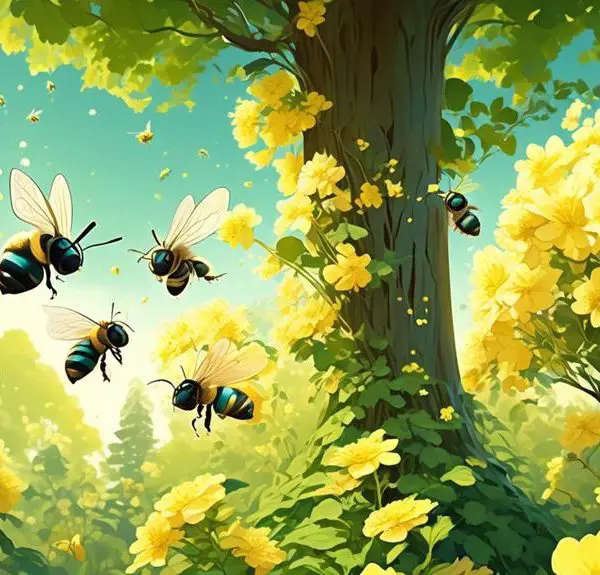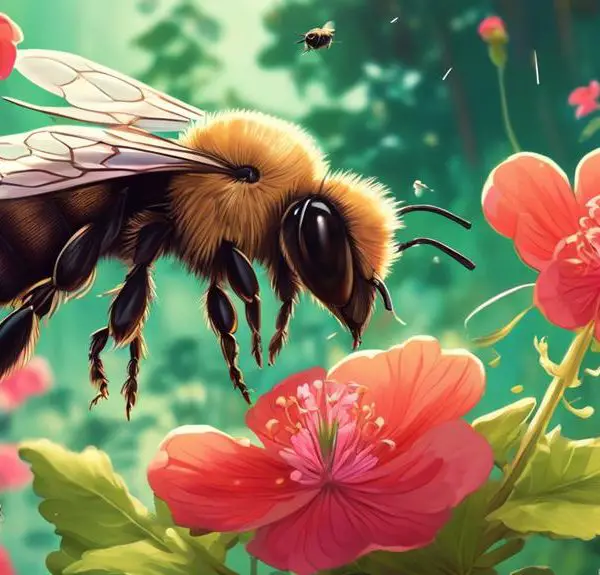Journey into the fascinating world of mason bees and their curious attraction to clover flowers; a compelling mystery waiting to be unraveled.
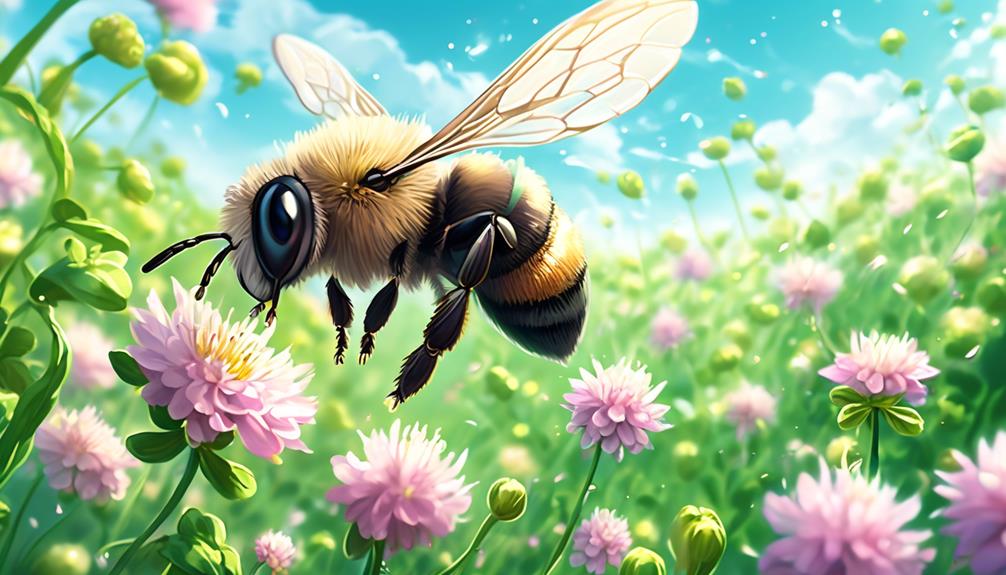
Do Mason Bees Like Clover Flowers?
Have you ever wondered if mason bees are drawn to clover flowers? You're not alone. This is a question that has sparked curiosity among both scientists and gardening enthusiasts.
Mason bees, known for their industrious nature and their vital role in pollination, have specific preferences when it comes to flowers. Undeniably, clover flowers are common and have a certain appeal to various pollinators, but do they hold the same allure for mason bees?
There's more to this intriguing interplay between these bees and clovers than meets the eye, certainly enough to ignite a deeper exploration into this topic.
Key Takeaways
- Mason bees have a strong preference for clover flowers.
- Mason bees collect pollen and nectar from clover flowers.
- Mason bees facilitate cross-pollination of clover, contributing to seed production.
- Mason bees support the propagation and reproduction of different plant species, strengthening ecosystems.
Understanding Mason Bees
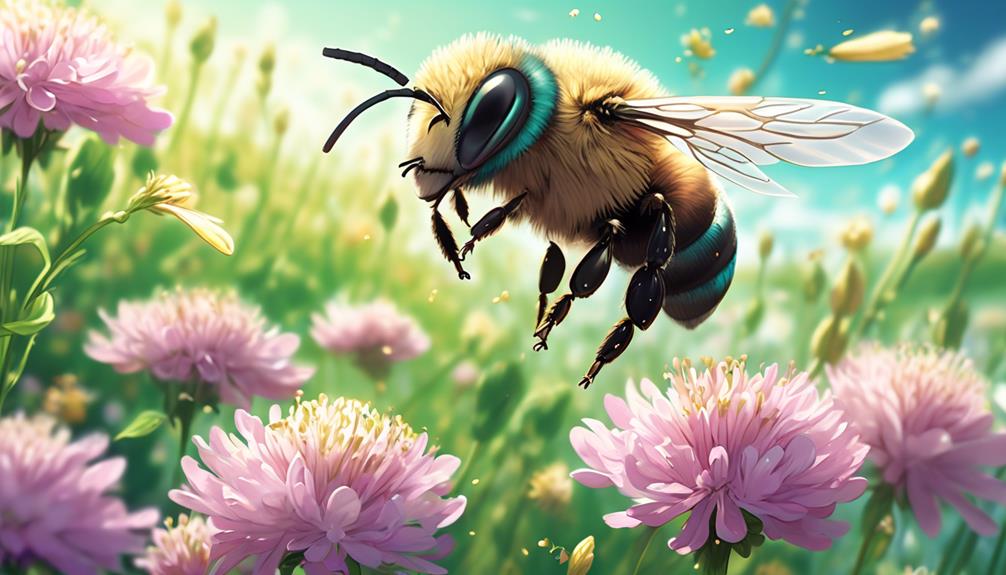
While you may be familiar with honeybees, it's high time to understand Mason bees, solitary insects known for their remarkable pollinating efficiency and unique nesting behaviors. Unlike honeybees that live in colonies, Mason bees are solitary creatures. Each female is fertile and creates her own nest, typically in hollow reeds or holes in wood, where she lays her eggs. Because they're not protecting a hive, they're less likely to sting unless provoked, making them an ideal neighbor in your garden.
Mason bees are renowned for their pollination prowess. They're known to be more efficient than honeybees, with a single Mason bee capable of doing the work of 100 honeybees. This is because they carry pollen on their belly, which falls off easily as they flit from flower to flower. This makes them an important player in the ecosystem, and hugely beneficial to agriculture and horticulture.
Moreover, these bees have a unique characteristic: they're not attracted to human food or garbage, making them less of a nuisance compared to other bee species. Understanding these features, it's clear why Mason bees are gaining popularity among gardeners and farmers alike.
Clover Flowers: A Brief Overview
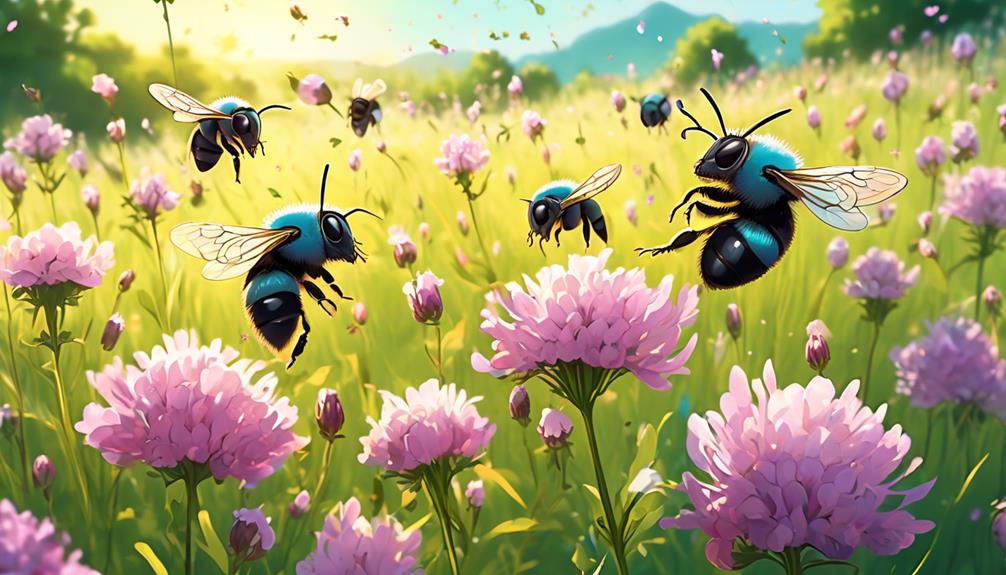
Diving into the world of clover flowers, you'll find that these small, trifoliate plants play a vital role in ecosystems and agriculture, offering more than just charm to our landscapes.
From a biological perspective, clovers belong to the Trifolium genus, with over 300 species that vary in size, color, and growth habits. These perennials are predominantly found in meadows, grasslands, and other temperate regions worldwide.
Clovers are renowned for their ability to fix nitrogen, a process where they convert atmospheric nitrogen into a usable form for plant growth. They're often used as cover crops in agriculture to enhance soil fertility and structure. This is why you'll often see them interspersed in fields and gardens.
The flowers, typically white, pink or red, appear in dense globular heads and are a rich source of nectar. This makes them attractive to a variety of pollinators, including mason bees. They bloom from spring through autumn, depending on the species, providing a long season of forage for these critical insects.
In the world of clovers, you'll find a balance of beauty, biology, and ecological significance. It's no wonder that these humble plants draw the attention of mason bees and other pollinators.
Mason Bees and Clover Interactions

When you observe a clover field buzzing with activity, it's likely you're witnessing the industrious work of mason bees, a key pollinator of these trifoliate plants. These bees have a strong preference for clover, due to its high pollen and nectar content. They're vital to the life cycle of clover, facilitating the process of cross-pollination, which in turn enhances genetic diversity and strengthens the plant population.
Let's dive a bit deeper into how this interaction works. Mason bees visit clover flowers for food, collecting pollen on their hairy bodies. As they move from flower to flower, they inadvertently transfer some of this pollen, thus fertilizing the flowers.
Here's a simple table to help you understand the process:
Mason Bees Action | Effect on Bees | Effect on Clover |
|---|---|---|
Visiting clover flowers | Collect food (pollen and nectar) | Receive pollen |
Moving between flowers | Pollen sticks to their bodies | Cross-pollination occurs |
Inadvertent pollen transfer | No direct benefit | Fertilization, leading to seed production |
Importance for Ecosystems
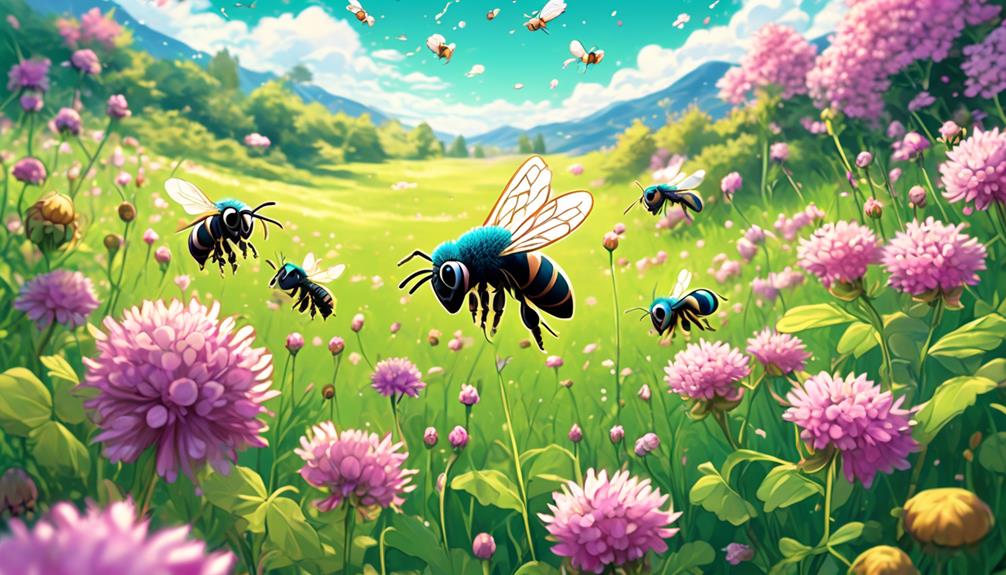
In understanding the essential role of mason bees in pollinating clover, you're also unraveling their significant impact on broader ecosystems. These diligent pollinators contribute to the vitality and diversity of plant life, thereby shaping the environment in which we live.
Mason bees' attraction to clover flowers isn't just about them getting a meal. It's a crucial ecological interaction that supports the propagation of clover plants. Through their pollination activity, they assist in the production of clover seeds, ensuring the plant's survival and spread. The presence of clover affects soil health, as it's a nitrogen-fixing plant, improving the fertility and productivity of the soil.
Moreover, these bees' pollination service doesn't stop at clover. They're generalist pollinators, visiting a wide variety of flowers, and hence, support the reproduction of different plant species. This diversity strengthens the resilience of ecosystems, allowing them to withstand environmental changes and threats.
It's clear that mason bees, through their love of clover and other blooms, play a pivotal role in maintaining the balance and health of our ecosystems. Recognizing their importance, it's incumbent upon us to protect these industrious insects and the vital work they perform.
Tips for Encouraging Mason Bees
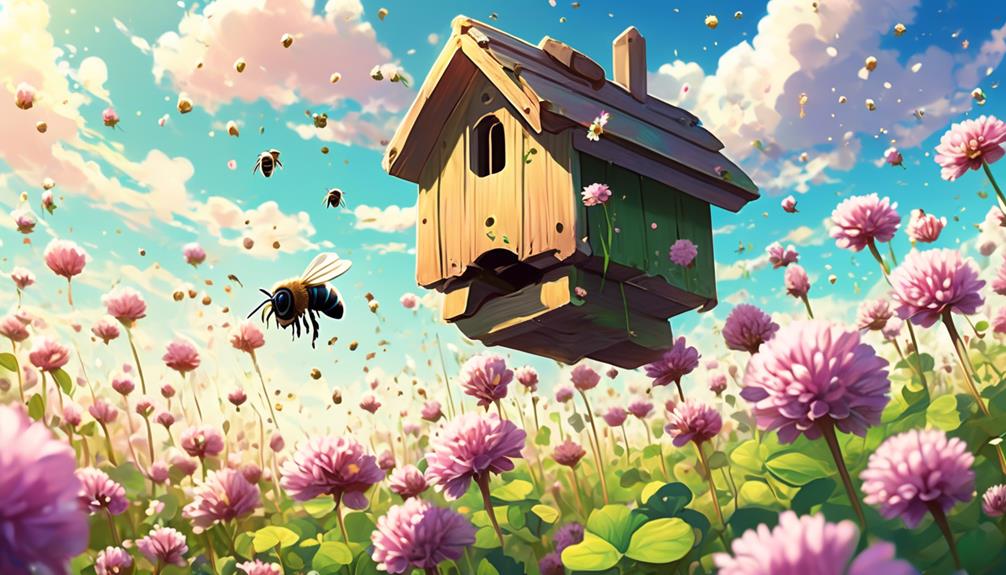
Given the invaluable role mason bees play in our ecosystems, it's essential you understand how to encourage their presence in your environment. Providing a suitable habitat, supplying food sources, and safeguarding them from pesticides are key steps in attracting these industrious pollinators.
Habitat | Food Source | Pesticide Control |
|---|---|---|
Nesting houses with small tubes or holes are ideal. Avoid treated wood or metal. | Mason bees need a variety of flowers for pollen and nectar. Clover is one of their favorites. | Be cautious when using pesticides. Opt for organic or bee-friendly alternatives. |
Position the house in a sunny, east-facing location. | Maintain a steady supply of flowering plants throughout the bee active season. | Apply pesticides late in the evening when bees are less active. |
Protect the house from wind and rain. | Provide a shallow water source for the bees. | Create a pesticide-free zone around the bee house. |
Conclusion
Yes, mason bees do like clover flowers. They're attracted to the clover's nectar, helping in pollination.
This interaction is vital for our ecosystems, maintaining biodiversity and food production.
To encourage mason bees, plant clover in your garden. Remember, these bees aren't aggressive, so they're safe to have around.
Supporting these bees means supporting the health of our planet. It's a small step with a big impact.
So, let's help the mason bees and our environment thrive.

